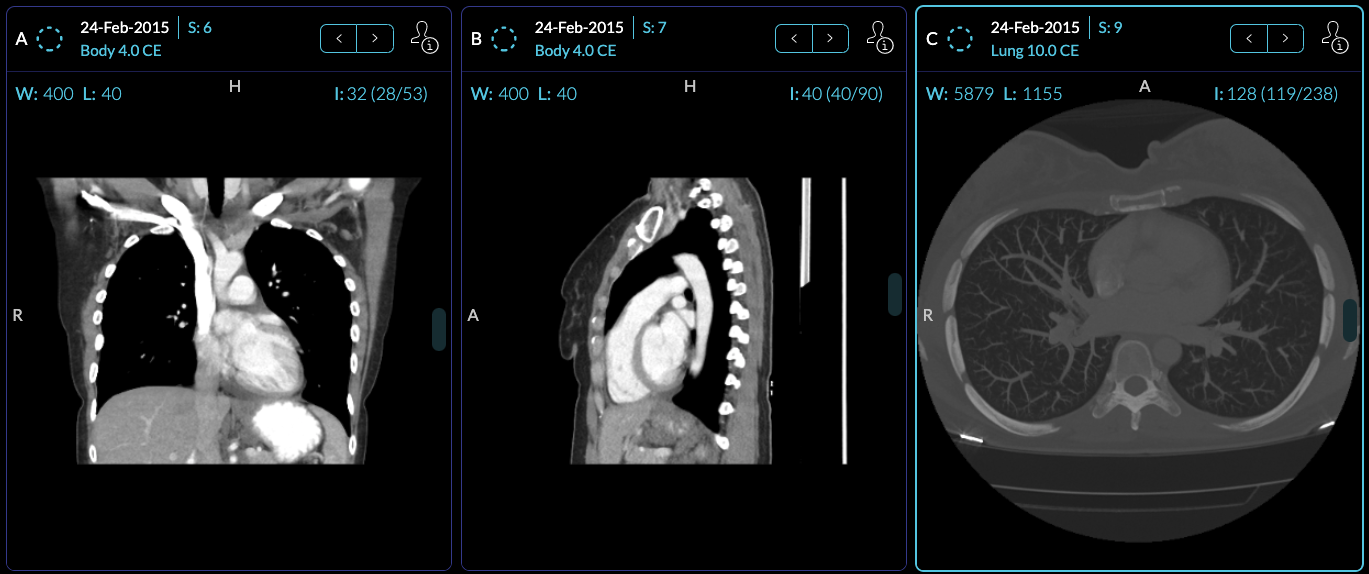Module: Viewport
Overview#
Viewports consume a displaySet and display/allow the user to interact with data.
An extension can register a Viewport Module by defining a getViewportModule
method that returns a React component. Currently, we use viewport components to
add support for:
- 2D Medical Image Viewing (cornerstone ext.)
- Structured Reports as SR (DICOM SR ext.)
- Structured Reports as HTML (DICOM html ext.)
- Encapsulated PDFs as PDFs (DICOM pdf ext.)
- Whole Slide Microscopy Viewing (whole slide ext.)
- etc.
The general pattern is that a mode can define which Viewport to use for which
specific SOPClassHandlerUID, so if you want to fork just a single Viewport
component for a specialized mode, this is possible.
// displaySet, viewportIndex, dataSourceconst getViewportModule = () => { const wrappedViewport = props => { return ( <ExampleViewport {...props} onEvent={data => { commandsManager.runCommand('commandName', data); }} /> ); };
return [{ name: 'example', component: wrappedViewport }];};Example Viewport Component#
A simplified version of the tracked CornerstoneViewport is shown below, which creates a cornerstone viewport and and action bar on top of it.
function TrackedCornerstoneViewport({ children, dataSource, displaySet, viewportIndex, servicesManager, extensionManager, commandsManager,}) { const renderViewport = () => { const { component: Component } = extensionManager.getModuleEntry( 'org.ohif.cornerstone.viewportModule.cornerstone' ); return ( <Component onElementEnabled={onElementEnabled} element={element} {...props} ></Component> ); };
return ( <> <ViewportActionBar onDoubleClick onSeriesChange /> <div className="relative flex flex-row w-full h-full overflow-hidden"> {renderViewport()} </div> </> );}
@ohif/viewer#
Viewport components are managed by the ViewportGrid Component. Which Viewport
component is used depends on:
- Hanging Protocols
- The Layout Configuration
- Registered SopClassHandlers
